This post may contain affiliate links. For more information, please see our affiliate policy.
Preparing bread cubes for stuffing is a super simple, important step and ensures perfectly moist, never-soggy stuffing. Savvy cooks cut the bread up into bite-sized pieces and let it dry out in advance, or you can dry it in the oven at the last minute.
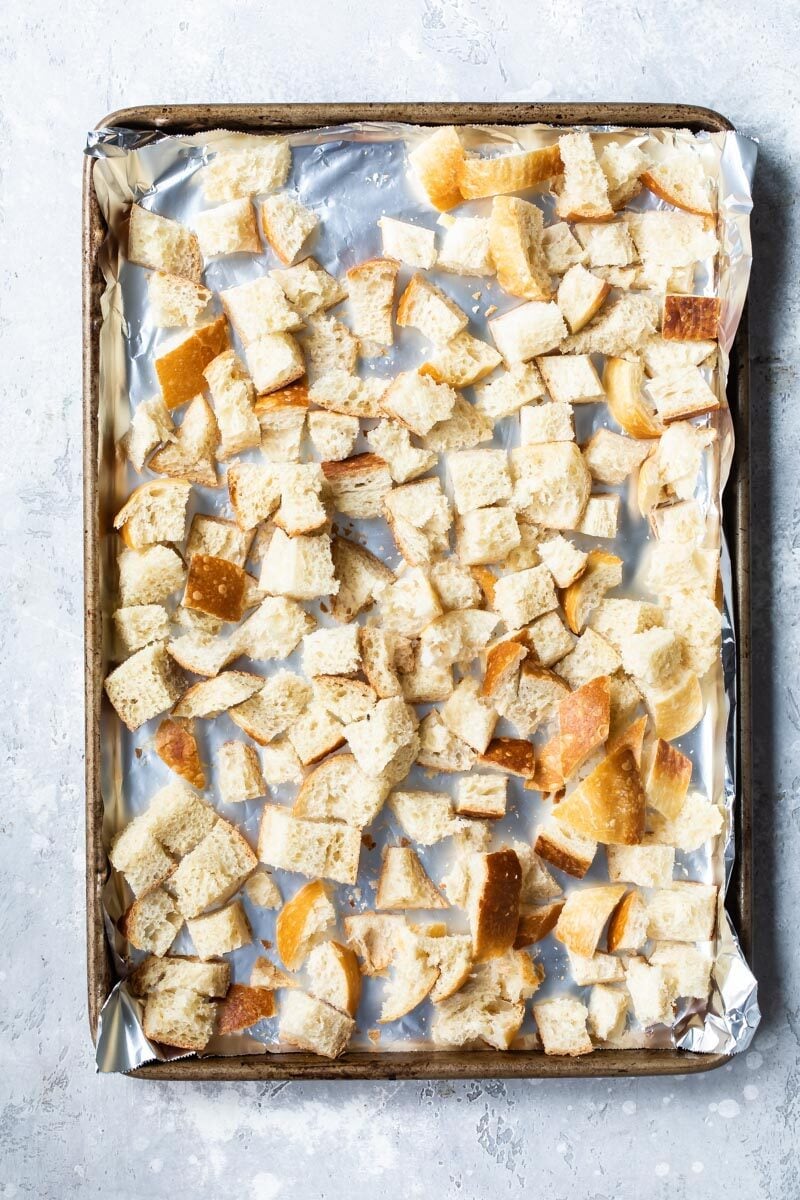
Throughout culinary history, stuffing has been one of the best ways to use up leftover, day-old bread. Combined with eggs or milk, savory herbs, and a little bit of this and that from the kitchen and baked. Few things are more delicious.
Today, not every household has lots of stale bread sitting around, and classic stuffing is usually saved for the holidays when big groups gather. That means you have to buy a loaf or two of freshly baked bread and let it dry out. Why? Dry bread has more power to soak up all the broth and flavor as it bakes.
This technique is the best way to cube and dry out bread, and it couldn’t be easier.
Table of Contents
Ingredient notes
- Bread: You can use almost any type of high-quality bread: unsliced French or Italian bread, sturdy sandwich loaf, brioche, challah, or even cornbread. Avoid overly-soft or fluffy white sandwich loaves.
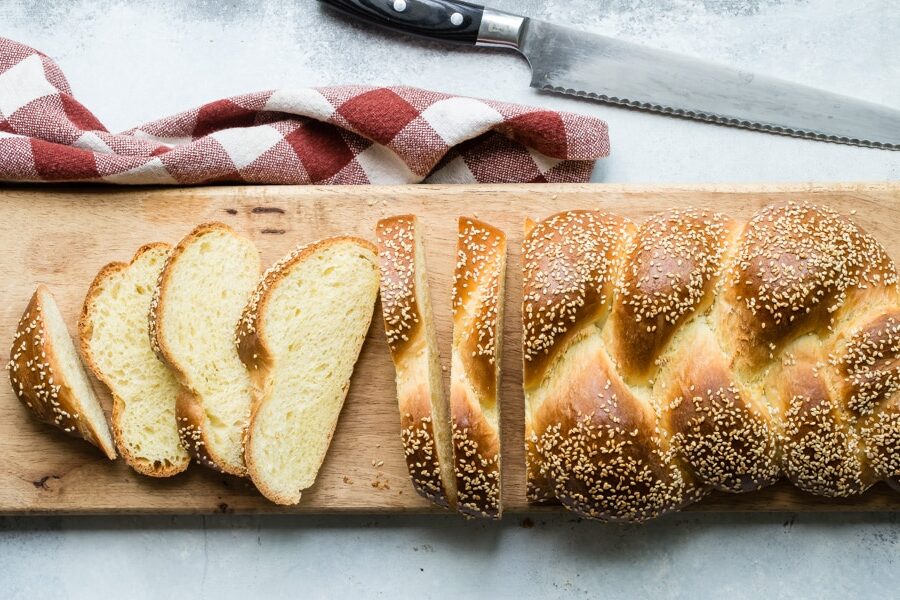
Step-by-step instructions
- Two to three days before you plan on assembling the stuffing, take a serrated knife and slice the loaf into rough 1/2-inch cubes, crust and all. You can also tear the loaf into pieces by hand for a more rustic look.
- Spread the bread chunks out on a baking sheet and drape with a clean kitchen towel. Let them dry out at room temperature over the next couple days.
- If you don’t have the time, you can speed up the drying-out process by using the oven. Spread the bread out on a baking sheet and bake in a low oven set at 225 degrees for 30 to 40 minutes until dry.
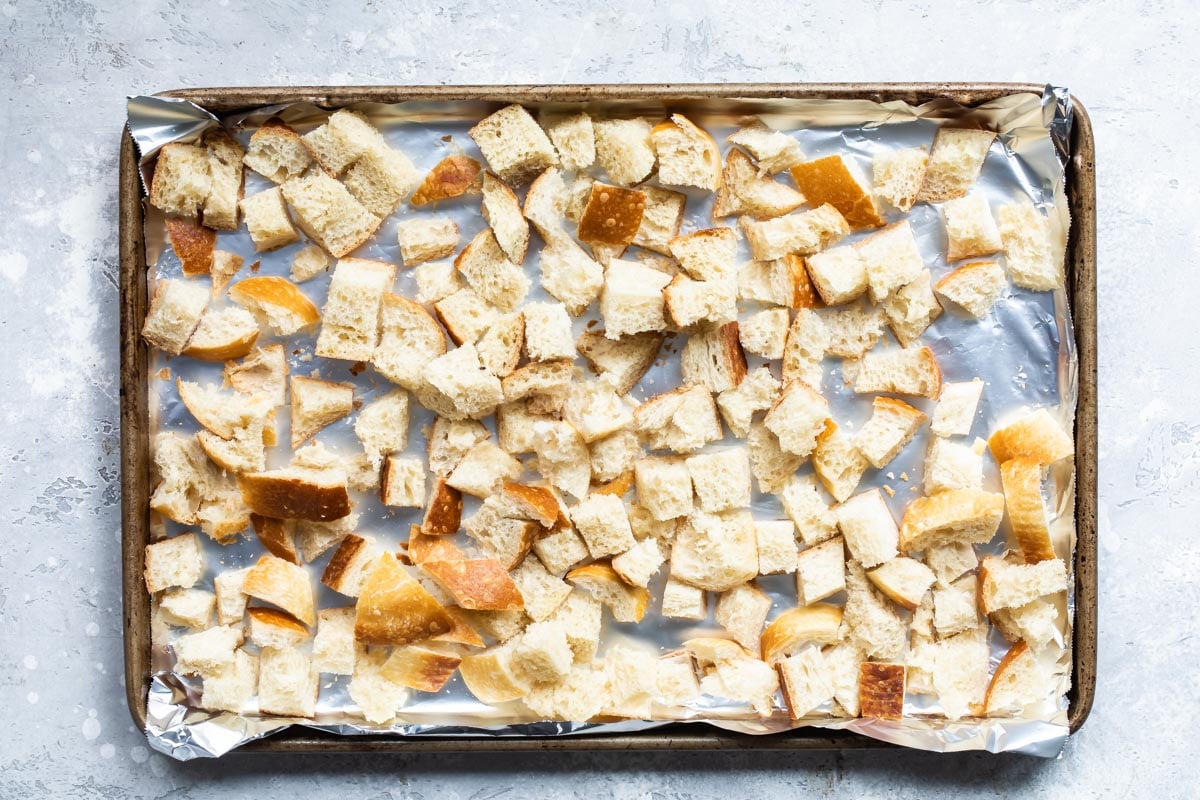
Recipe tips and variations
- Yield: A 1-pound bread loaf usually makes 10 cups of bread cubes, enough for a 9-inch by 13-inch baking dish of stuffing, or 10 to 12 servings (assume 1 cup of stuffing per person).
- Make ahead: The dried cubes can stay at room temperature up to 4 days in advance. Keep them in a dry, cool place. After you’ve assembled the stuffing, refrigerate it up to 1 day in advance. See my full Make-Ahead Thanksgiving menu for more ways to cook in advance including a Make Ahead Roasted Turkey, Make Ahead Mashed Potatoes (that won’t get watery in the freezer), and Make Ahead Pumpkin Pie.
- Bread pudding: Savory or sweet bread puddings also start with dried bread.
- Classic oven-baked stuffing: To make my homemade Bread Stuffing recipe, preheat the oven to 400 degrees and rub a 9×13-inch baking dish with butter. Add stuffing to the baking dish, cover tightly with foil, and bake until mostly heated through, about 25 minutes. Remove foil and bake until crispy edges form, about 10 to 20 minutes longer.
- Crockpot stuffing: Save your oven space and make bread stuffing in your slow cooker. You’ll still have soft, chewy bread cubes with plenty of crispy edges without using your oven.
- Small batch stuffing: My Bread Stuffing for Two is the same delicious, buttery stuffing with all your favorite flavors, but scaled down to a smaller quantity for small gatherings. See my full Thanksgiving for Two Menu which includes a pair of roasted Cornish Hens with Stuffing and two Mini Pumpkin Pies for dessert.
- Sausage stuffing: My homemade Cornbread Dressing is made with plenty of sausage for a spicy kick.
- Vegan stuffing: Filled with wild mushrooms, leeks, fresh kale, and all the classic Thanksgiving herbs you love, this Vegan Stuffing recipe has bread cubes that are soft and chewy on the inside with browned, crispy edges outside. The entire recipe is 100% vegan and delicious.
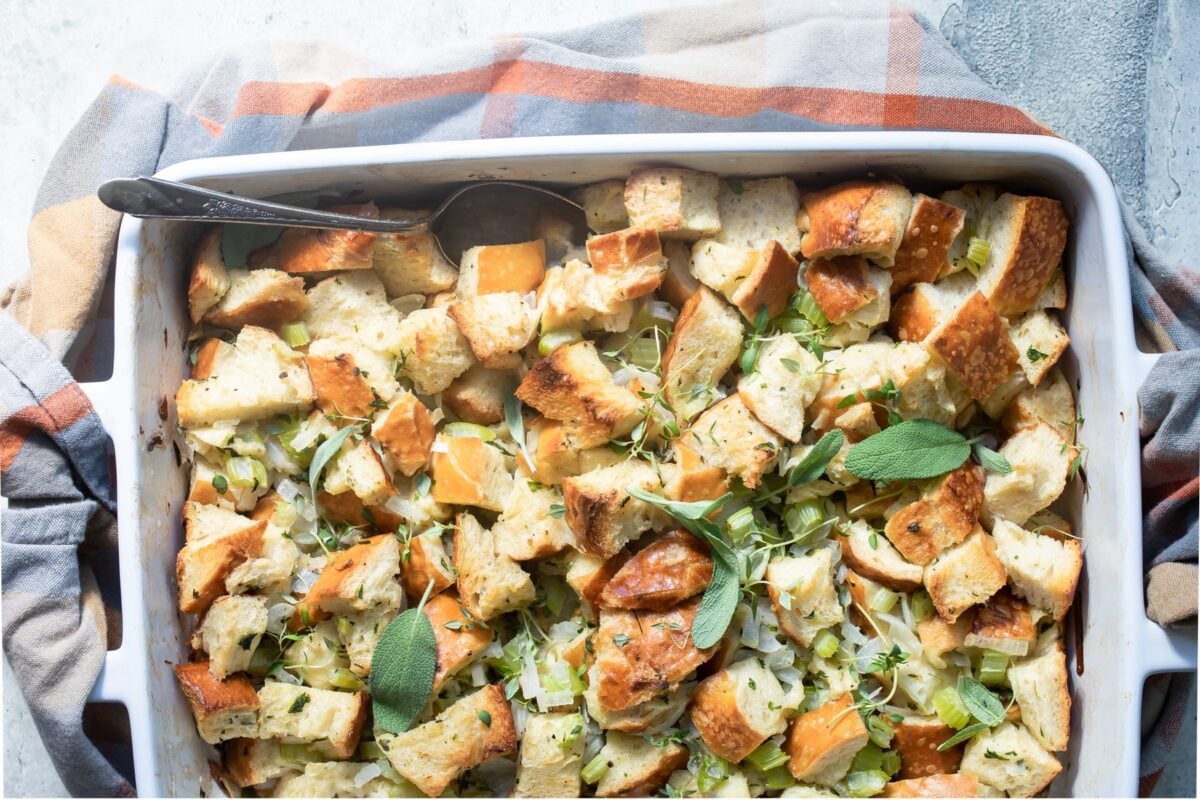
Frequently Asked Questions
For food safety reasons, and for a more evenly cooked bird, most modern recipes don’t encourage stuffing a turkey. If you decide to stuff your turkey, combine wet and dry stuffing components just before placing them in the cavity, ensuring any raw meat, poultry, or seafood used in the stuffing is fully cooked beforehand. Do not stuff a bird with cooked stuffing. Use a large spoon or your hands to loosely stuff the body and neck cavities (do not pack it tightly because the stuffing expands while it cooks). Truss the main cavity with trussing pins to keep the stuffing inside. The stuffing must register 165 degrees on an internal thermometer to be safe to eat. For more information, see the USDA website.
More recipes with bread cubes
Side Dish Recipes
Cornbread Dressing with Sausage
Side Dish Recipes
Make Ahead Stuffing
Breakfast Recipes
Bread Pudding Recipe
Italian Recipes
Panzanella Salad
Join Us
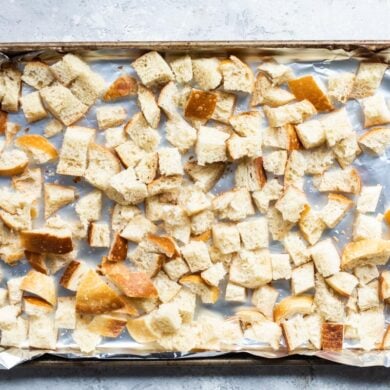
How to Make Bread Cubes for Stuffing
Ingredients
- 1 large loaf bread cut into 1/2-inch cubes (about 1 pound, see note 1)
Instructions
To dry bread cubes on the counter:
- Cube and dry the bread up to 3 days in advance. Keep covered with a dry kitchen towel on counter.
To dry bread cubes in the oven:
- Preheat oven to 225 degrees. Place cubes in an even layer and bake until bread is dried out, about 30 to 40 minutes.
Notes
- Bread: You can use almost any type of high-quality bread: unsliced French or Italian bread, sturdy sandwich loaf, brioche, challah, or even corn bread. Avoid overly-soft or fluffy white sandwich loaves.
- Yield: A 1-pound bread loaf usually makes 10 cups of bread cubes, enough for a 9-inch by 13-inch baking dish of stuffing, or 10 to 12 servings (assume 1 cup stuffing per person).
Nutrition
Meggan Hill is a classically-trained chef and professional writer. Her meticulously-tested recipes and detailed tutorials bring confidence and success to home cooks everywhere. Meggan has been featured on NPR, HuffPost, FoxNews, LA Times, and more.
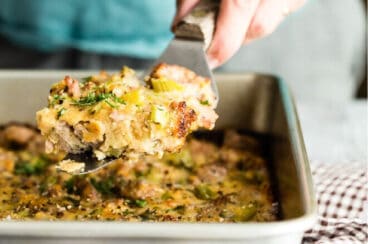
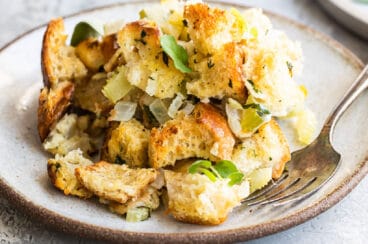
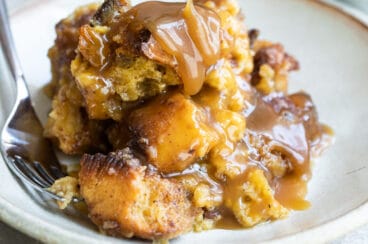

Hi! I only have Udi’s gluten free soft white sandwich bread. Couldn’t use the heartier gluten free bread because of a sesame allergy. Can I still bake the bread cubes in the oven and dry them out like you directed? Will it still turn out ok for stuffing?
I also don’t know how many cups of unbaked bread cubes I need to feed 20 people??
Thanks!!
Happy Thanksgiving!!
Hi Sonia! Thank you so much for writing. You absolutely can bake them to dry them out, use a 300-degree oven and bake about 30 minutes, just watch the baking time since it will depend on how large ro small the cubes are. I would estimate you’ll need about two loaves of bread for twenty people. I recently wrote a recipe specifically for gluten-free bread, although I used the Udi’s multigrain bread, I hope you find it helpful, too: https://www.culinaryhill.com/gluten-free-stuffing/. Please write if you have anymore questions! Happy Thanksgiving! – Meggan
Thank you. Huge time saver in a pinch
You’re so welcome, Milo! Take care! – Meggan
I dried them on the counter for 4 days but don’t need them for 2 more days can I keep them in a zip lock bag without freezing them for 2 days? Please advise. Thanks
Hi Susan, I would suggest freezing them at this point, since it’s been 4 days. They might be good in 2 more days, but I would be worried about them becoming moldy. – Meggan
I made a yogurt wheat bread and cut it up as your recipe said. I’ve baked it just as your recipe said but let it cool in the oven with the oven off for three hours. After removing from the oven let cool further and bagged the cubes releasing all the air from the bag and popped it in the freezer for years and two weeks for Thanksgiving. Undoubtedly this will be a healthier bread stuffing recipe snd much more cost effective as well. Grateful for your post -happy holidays! Viv
Happy holidays, too! Hope your stuffing is delicious!
I’d like to make these well in advance of Thanksgiving. How can I keep them longer than four days?
Hi Cammy, I’ve placed the cooled cubes into freezer-safe zip-top bags, removed as much air as I can, and freeze for up to two months. Hope this helps you prepare for Thanksgiving! Take care! – Meggan